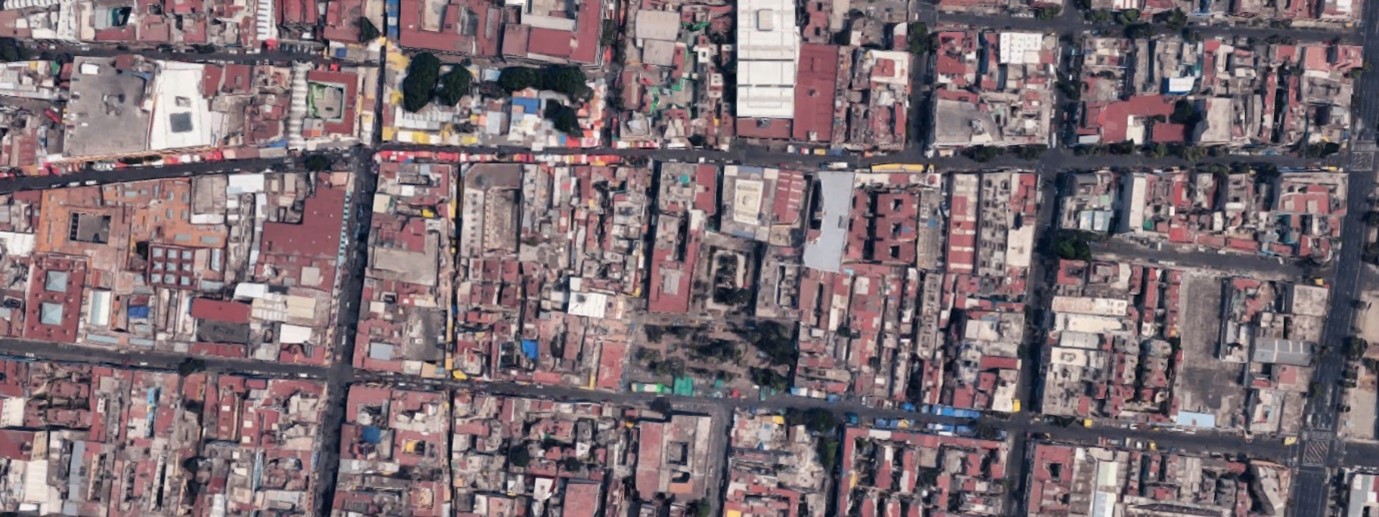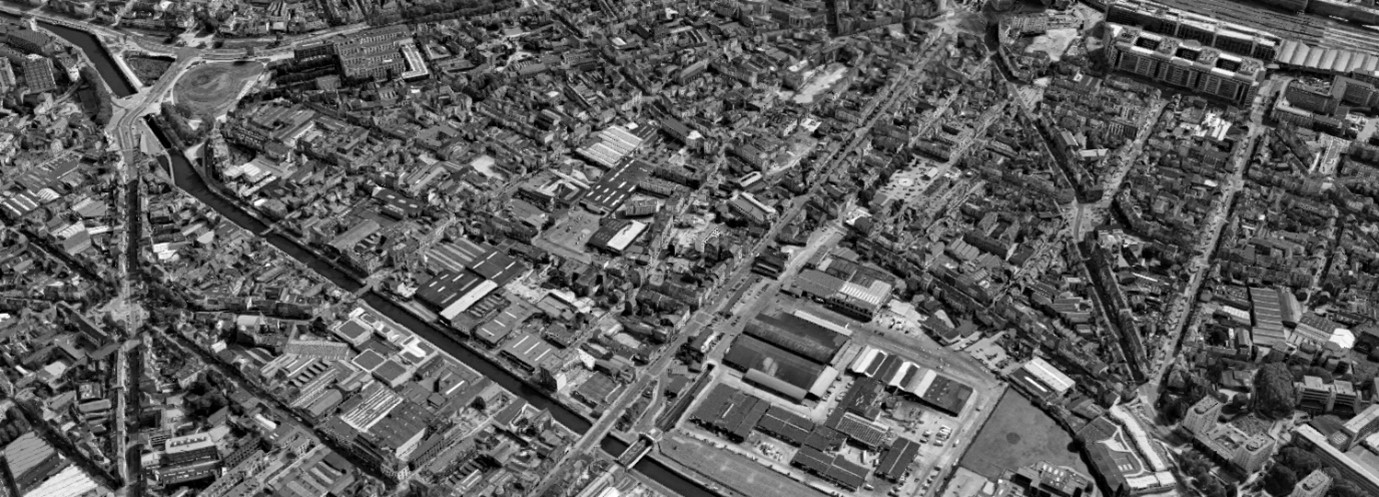MASTER STUDIO 2022-2023, sem 3
Craftmanship and Brussels Way engagements.
Tutor : Johan Nielsen
FOUND IN TRANSLATION : XOCHIQUETZAL – HEYVAERT
Image left: Model of the Casa Xochiquetzal. Jannes Moons.
INTRODUCTION
The strategy of the studio is to develop a twofold design research on two remote sites (one in Mexico City and one in Brussels). The objective is to trigger bottom-up strategies able to reinforce fragile communities across the world. The two sites are similar. They are both in working-class district, they are iconic buildings for the neighbourhood and they both host fragile people. The studio will focus on the act of making as a critical act that contributes to transform social realities.
STUDIO DESCRIPTION
The effects of climate change, recent geopolitical events and the global pandemic show us that physical limits and capacity of movement take new meanings and increase the interest to understand the world across its frontiers. To understand how our interdependent world is fragmented, alternative views must be proposed to the antagonism globalization – localism commonly accepted as a major framework of reference in the last decades (Latour 2018). However, the abandonment of this antagonism contributes to enhancing a state of confusion, notably in architectural critique (Grafe 2017). The studio explores this state of confusion and proposes to consider remoteness in the architectural practice as a key notion to overcome dichotomies in the understanding of the changes at play in the discipline. The methodology of the studio is paradoxical. It explores both remote and local realities through their material presence. The physical realities of buildings are considered as unveilers of the social, cultural and political tensions of the places. The transformations made to the buildings will be the starting point of critical bottom-up design processes rooted on the intimacy of the local communities, despite the distance. Tools to engage from a distance will be introduced and discussed in the studio, in order to understand distant realities, acknowledging similarities, differences, and, finally, identifying what is not lost but found in translation in this kind of remote practices.
The studio is held in collaboration with the School of Architecture at UNAM Mexico. The site of intervention in Mexico, is the Casa XOCHIQUETZAL, a social equipment housed in a massive painted brick colonial building aimed to host former sex-workers in the historical centre of Mexico City. In Brussels, the site is a former slaughterhouse, a concrete structure cladded with painted bricks, situated in the heart of the HEYVAERT neighbourhood (Anderlecht). The building will be transformed into a community centre, in order to enhance social life in the neighbourhood. Both sites have similitudes in terms of programs, social dynamics, and scale of intervention. More important: in both sites, fragile people deserve to be listened, understood, and defended.

Casa Xochiquetzal

A room of Casa Xochiquetzal

Heyvaert former slaughterhouse. Picture: Lisa Eisen.

Heyvaert former slaughterhouse. Picture: Lisa Eisen.

Xochiquetzal urban context

Heyvaert urban context
RESSOURCES
Crawford Matthew: Shop Class as Soulcraft: An Inquiry Into the Value of Work (London: Penguin Press, 2009)
Grafe Christoph and Helena Mattsson, ‘Critique: Building Appraisals – Call for Papers’, The Journal of Architecture, 22:2 (2017), 185-187.
Latour Bruno, Down to Earth: Politics in the New Climatic Regime (Cambridge : Polity Press, 2018).
Simmel Georg, ‘The stranger’, in Social theory: the multicultural and classic readings, ed. by Charles Lemert (Boulder: Westview Press, 1999), pp. 184–189.
JNC INTERNATIONAL & VILLE OUVERTE, ‘Contrat de Rénovation Urbaine 5 Heyvaert Poincaré’, Fiches projets Novembre 2017.
https://cuartoscuro.com/revista/las-amorosas-mas-bravas/
https://www.youtube.com/watch?v=mnQyWUvSQe4&ab_channel=Cin%C3%A9polisDistribuci%C3%B3n
PROGRAM
Phase 1. (week 1 – 5), in group.
- Data mining of the documentation on Casa Xochiquetzal (provided by UNAM Mexico) + virtual site visit
- Data mining of the documentation on Heyvaert slaughterhouse (provided by KUL) + fieldwork
- Online lecture by Karina Contreras (UNAM Mexico)
- Input session on Heyvaert site
- Input session on tools to engage from a distance
- Research specific topics related to Casa Xochiquetzal and to Heyvaert slaughterhouse (social context, community life, spatial configuration)
- The output of Phase 1 are a model of casa Xochiquetzal and a model of Heyvaert slaughterhouse (in groups)
Phase 3. (week 6 – 7)
- Definition of bottom-up strategies on casa Xochiquetzal and Heyvaert slaughterhouse
- Collective discussions and peer reviews
Week 8 – Fragile week (tbc)
Phase 4. (week 9 – 13)
- Further development of architectural design projects on casa Xochiquetzal and Heyvaert slaughterhouse
Week 14 – Final Presentation with UNAM Mexico + studio booklet

